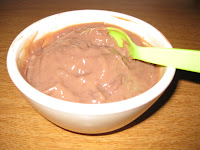
Pick your Produce Wisely
It is fairly obvious by now that eating lower down on the food chain will save energy and fossil fuels, thus reducing your overall carbon footprint. A mass movement to vegetarianism would do wonders for the prevention of further global warming. But in today’s world of industrial agriculture, are all veggies equal in terms of their impacts on the planet? Of course not! Even a diet consisting solely of produce will produce a significant environmental impact because of the pesticides, fertilizers, and water that went into growing these foods. Each crop differs in the amounts of these inputs it demands. So now that you have increased the proportion of plants in your diet, it is time to consider which plants to eat and which to avoid.
In terms of fertilizer consumption, bananas are the worst villain, followed by beets and citrus fruits. Growing bananas requires 427 pounds of NPK fertilizer per acre compared to just 35 pounds per acre for beans and other nitrogen-fixing legumes. Legumes have a symbiotic relationship with bacteria in their roots that allows them to absorb N2 from the air and convert it into nitrate that they can use to make proteins. Thus, beans do not require much extra nitrogen to be added in the form of inorganic fertilizers. In fact, they actually fertilize the soil themselves!
As for pesticides, raspberries are responsibly for the greatest volume of chemicals (10.2 pounds per acre), followed by carrots and strawberries. Avocados and citrus need significantly less pesticides, but still fall near the middle in the rankings. The absolute best crops to eat if you want to decrease your pesticide use include beans, grains, spinach, and broccoli. These data are based on the volume of pesticides used per acre in growing the crops, but has nothing to do with the amount of pesticide residue left on the produce when it reaches your mouth. According to studies done to determine the amounts of pesticides remaining on fruits and vegetables, the “dirty dozen”, as they are popularly called, include peaches, apples, sweet bell peppers, celery, and strawberries. These are foods that would be best to buy organic if you are worried about the possible negative effects of pesticide consumption on your personal health.
Next time you go shopping for your favorite produce, think about what it is that your food consumes before you decide what food you want to consume. Every seemingly insignificant little choice you make affects not only you but the people and environment all around you. So what will you have in your morning cereal today? Strawberries, peaches, or bananas? So many choices, so many consequences.
Sara































